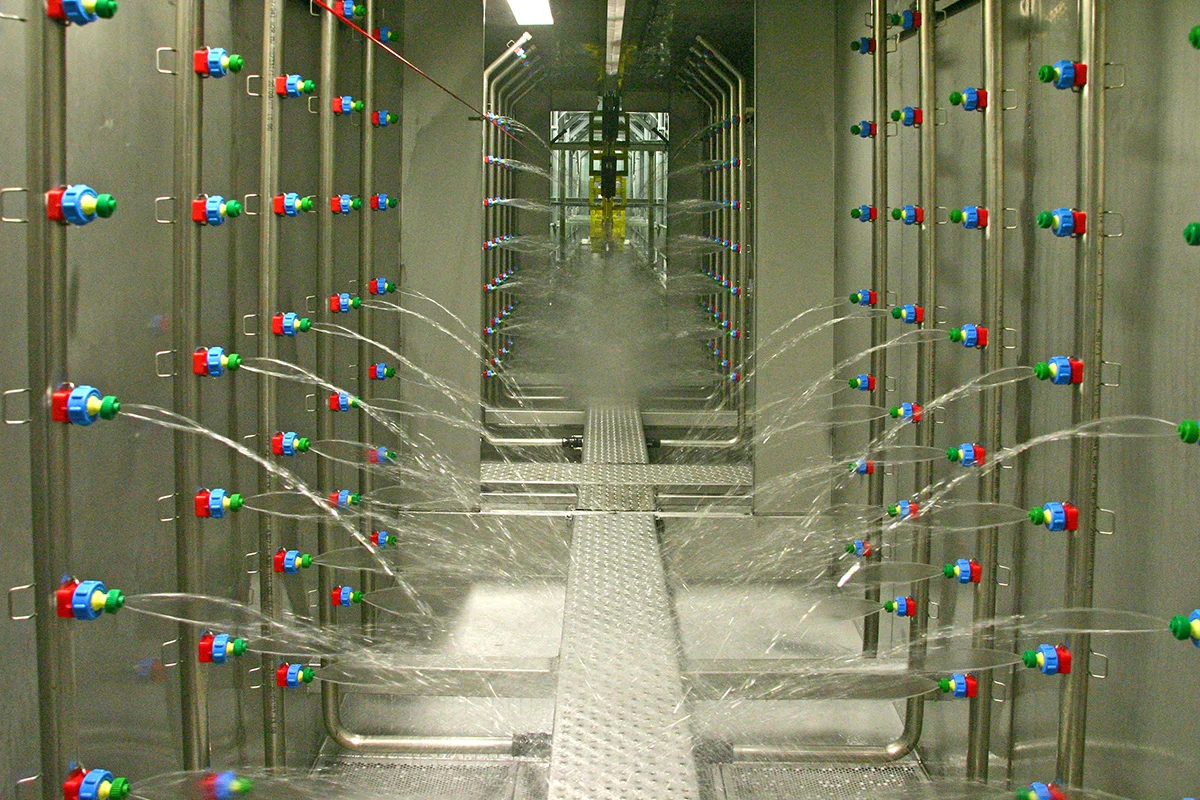
Clear records
history record

Products
Contact
Electrophoretic Cleaning Equipment
Electrophoretic Cleaning Equipment
I. Introduction
Electrophoretic cleaning equipment plays a crucial role in industries such as automotive, electronics, home appliances, metal processing, construction, hardware, medical devices, and aerospace. It enhances product quality and performance.
II. Application Areas
1. Automotive Manufacturing
Body Coating: Used for electrophoretic priming of vehicle bodies, ensuring uniform coating and excellent corrosion resistance.
Component Cleaning: Cleans engine parts, chassis, and other components, ensuring surfaces are free from contaminants.
2. Electronics Industry
PCB Cleaning: Removes contaminants from printed circuit boards to improve soldering and coating quality.
Semiconductor Cleaning: Ensures high cleanliness for wafers and semiconductor components.
3. Home Appliance Manufacturing
Exterior Coating: Used for electrophoretic coating of appliance exteriors such as refrigerators and washing machines, improving aesthetics and durability.
Component Cleaning: Cleans internal components to ensure optimal performance and longevity.
4. Metal Processing
Pre-treatment: Cleans metal surfaces before electroplating or painting, enhancing coating adhesion.
Rust Prevention: Used for anti-corrosion treatment of metal products, extending service life.
5. Construction Industry
Steel Structure Coating: Applied to bridges and building steel structures for corrosion protection.
Aluminum Profile Treatment: Surface treatment for doors, windows, and curtain walls to enhance weather resistance.
6. Hardware Products
Tool Coating: Used for corrosion and aesthetic coating of manual and power tools.
Fastener Treatment: Anti-corrosion treatment for bolts, nuts, and other fasteners.
7. Medical Devices
Equipment Cleaning: Cleans and disinfects surgical instruments and medical devices.
Surface Treatment: Corrosion-resistant and aesthetic treatment for medical equipment surfaces.
8. Aerospace
Component Cleaning: Cleans aircraft engines, fuselages, and other parts.
Corrosion-Resistant Coating: Used for aerospace equipment to enhance durability.
III. Technical Overview
1. Basic Principles
Electrophoretic cleaning uses a spray circulation system to evenly distribute cleaning liquid onto the workpiece surface, ensuring efficient cleaning.
2. Core Process Flow
Degreasing: Removes grease and contaminants from the workpiece surface using alkaline degreasers or solvents.
Rinsing: Rinses with clean water to ensure complete removal of degreasers and contaminants.
Surface Conditioning: Enhances surface adhesion through acid washing or phosphating treatment.
Final Rinsing: Further removes residual chemicals, ensuring a clean surface.
IV. Technical Advantages
Efficient Cleaning: Electrophoretic technology penetrates micro-gaps to ensure thorough cleaning.
Uniformity: Even distribution of the electric field ensures consistent cleaning results, avoiding localized residue.
Eco-Friendly: Uses environmentally friendly cleaning agents to reduce pollution.
Energy Efficiency: Low energy consumption and operational costs, meeting energy-saving requirements.
High Adaptability: Suitable for a wide range of materials and complex-shaped workpieces.
High Automation: Automated operation reduces human intervention, improving efficiency and consistency.
Durability and Low Maintenance: Made from high-quality materials and advanced processes, ensuring long service life and low maintenance costs.
V. Development Trends
1. Automation and Intelligence:
Automation: Gradual realization of fully automated systems to reduce manual intervention and enhance efficiency.
Intelligent Control: AI and IoT technology integration for real-time monitoring and smart adjustment, optimizing cleaning performance.
2. Eco-Friendliness and Energy Saving:
Environmentally Friendly Cleaning Agents: Reduces harmful emissions and ensures compliance with environmental standards.
Energy Optimization: Improved design to lower energy consumption and minimize resource waste.
3. High Efficiency and Precision:
Efficiency Enhancement: Improves cleaning speed, reducing processing time.
Precision Cleaning: Meets high-precision cleaning requirements, suitable for complex workpieces.
4. Multifunctional and Integrated Systems:
Versatility: Equipped with multiple cleaning functions to adapt to different application needs.
Process Integration: Integration with other production processes to form a complete manufacturing line.
5. New Materials and Advanced Processes:
Durable Materials: Use of corrosion-resistant and high-temperature-resistant materials for extended equipment lifespan.
Advanced Technologies: Incorporation of ultrasonic and plasma cleaning technologies to enhance cleaning effectiveness.










